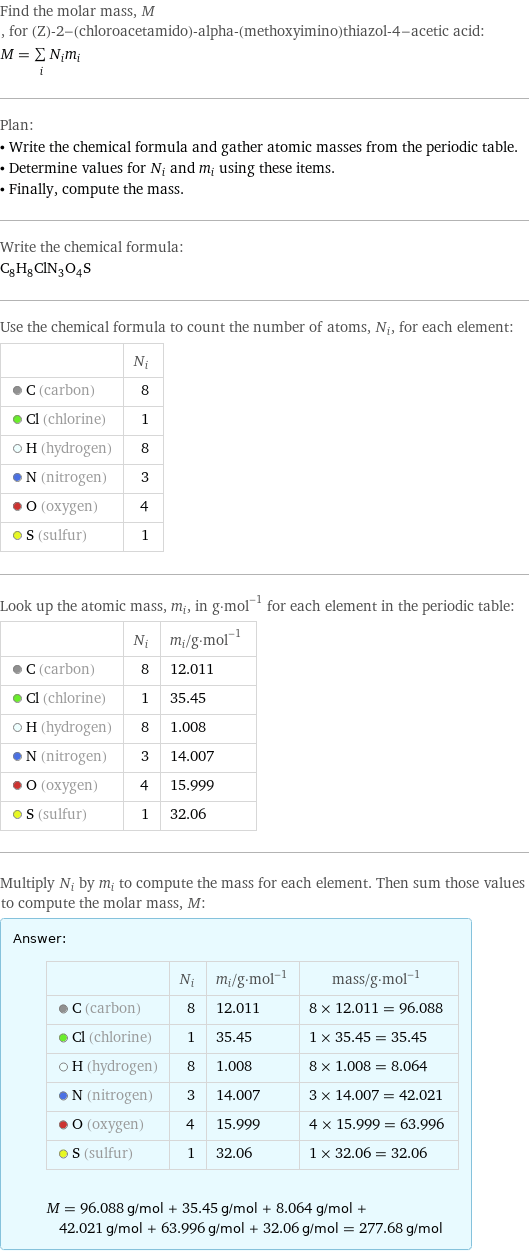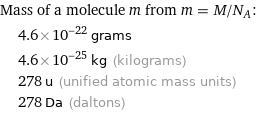Input interpretation

(Z)-2-(chloroacetamido)-alpha-(methoxyimino)thiazol-4-acetic acid | molar mass
Result

Find the molar mass, M, for (Z)-2-(chloroacetamido)-alpha-(methoxyimino)thiazol-4-acetic acid: M = sum _iN_im_i Plan: • Write the chemical formula and gather atomic masses from the periodic table. • Determine values for N_i and m_i using these items. • Finally, compute the mass. Write the chemical formula: C_8H_8ClN_3O_4S Use the chemical formula to count the number of atoms, N_i, for each element: | N_i C (carbon) | 8 Cl (chlorine) | 1 H (hydrogen) | 8 N (nitrogen) | 3 O (oxygen) | 4 S (sulfur) | 1 Look up the atomic mass, m_i, in g·mol^(-1) for each element in the periodic table: | N_i | m_i/g·mol^(-1) C (carbon) | 8 | 12.011 Cl (chlorine) | 1 | 35.45 H (hydrogen) | 8 | 1.008 N (nitrogen) | 3 | 14.007 O (oxygen) | 4 | 15.999 S (sulfur) | 1 | 32.06 Multiply N_i by m_i to compute the mass for each element. Then sum those values to compute the molar mass, M: Answer: | | | N_i | m_i/g·mol^(-1) | mass/g·mol^(-1) C (carbon) | 8 | 12.011 | 8 × 12.011 = 96.088 Cl (chlorine) | 1 | 35.45 | 1 × 35.45 = 35.45 H (hydrogen) | 8 | 1.008 | 8 × 1.008 = 8.064 N (nitrogen) | 3 | 14.007 | 3 × 14.007 = 42.021 O (oxygen) | 4 | 15.999 | 4 × 15.999 = 63.996 S (sulfur) | 1 | 32.06 | 1 × 32.06 = 32.06 M = 96.088 g/mol + 35.45 g/mol + 8.064 g/mol + 42.021 g/mol + 63.996 g/mol + 32.06 g/mol = 277.68 g/mol
Unit conversion

0.2777 kg/mol (kilograms per mole)
Comparisons

≈ 0.39 × molar mass of fullerene ( ≈ 721 g/mol )

≈ 1.4 × molar mass of caffeine ( ≈ 194 g/mol )

≈ 4.8 × molar mass of sodium chloride ( ≈ 58 g/mol )
Corresponding quantities

Mass of a molecule m from m = M/N_A: | 4.6×10^-22 grams | 4.6×10^-25 kg (kilograms) | 278 u (unified atomic mass units) | 278 Da (daltons)

Relative molecular mass M_r from M_r = M_u/M: | 278